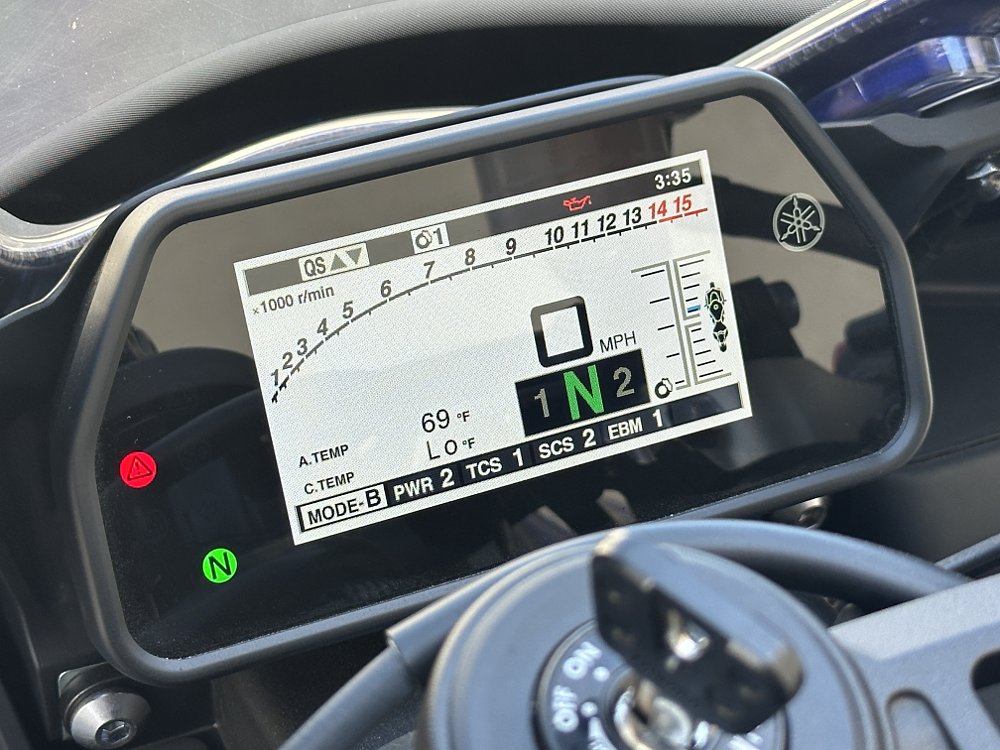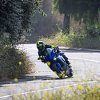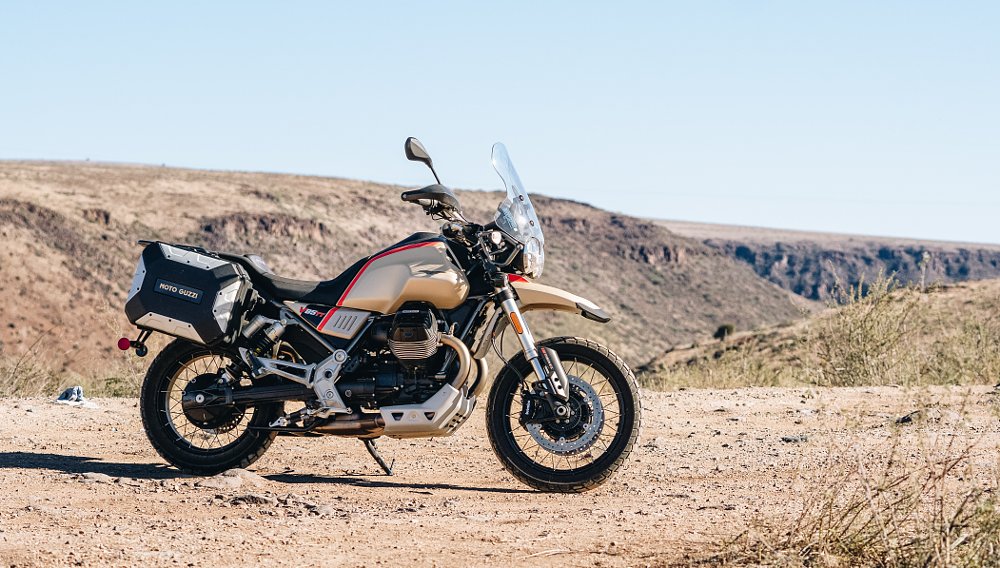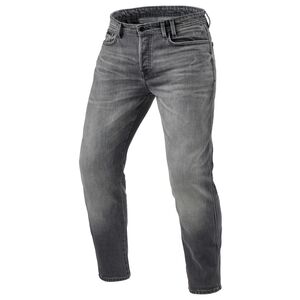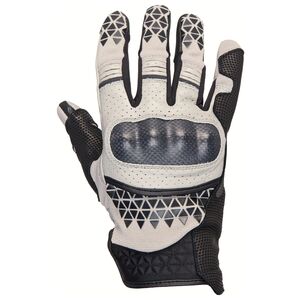“Never meet your heroes,” the saying goes. The fear, of course, is that they won’t shine as brightly in person as they do in your mind’s eye. I wondered if the same could be true of old friends.
People drift in and out of our lives, not unlike motorcycles, and we go through phases of feeling especially connected to certain friends, or machines. For me, Yamaha’s famous YZF-R1 is one of those acquaintances.
For 2015, Yamaha introduced a redesigned R1, cut from whole cloth, with a new engine that was lighter and more powerful than 2014, fresh bodywork, and futuristic performance-riding aids that used words like “axis” and “yaw.” I went to the first-ride event at Sydney Motorsports Park in Australia and flew home very impressed. “Almost any street-going superbike,” I said, “has just taken a discernible step backward.”
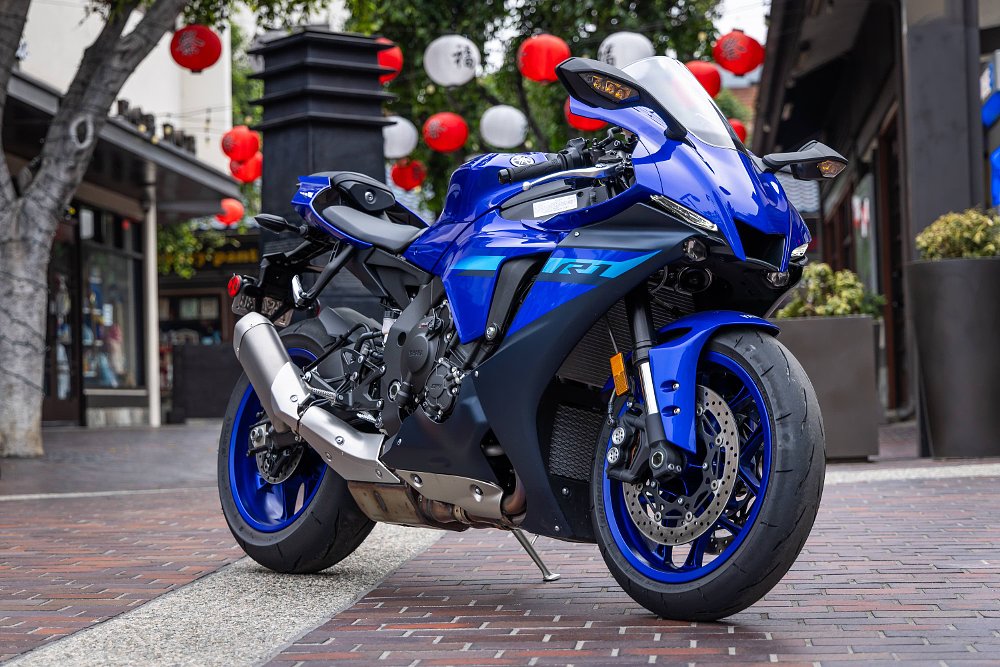
I went on to spend about a year with an R1, riding it for a few thousand miles on the street and then converting it into a budget, liter-class race bike, at which point I competed at a local Southern California club. The memory I hold of the R1 is of a bike that my lady friend, 29 years old at the time, proclaimed too uncomfortable and undignified after just a couple of rides on the passenger perch, and also a bike that delivered huge confidence at the race track.
That was nearly 10 years ago. So what’s the ol’ running mate up to these days, I asked myself.
Reacquainting with the R1
A few weeks later, a 2024 Yamaha R1 landed in our shop. And in my inbox landed a technical presentation outlining the updates made to the R1 for the 2020 model year, the most recent refresh of the bike. Among the 50 slides of information are a few key points — updated fueling to comply with Euro 5 regulations, adjustable engine-braking parameters, a fairing facelift, and some suspension tweaks.
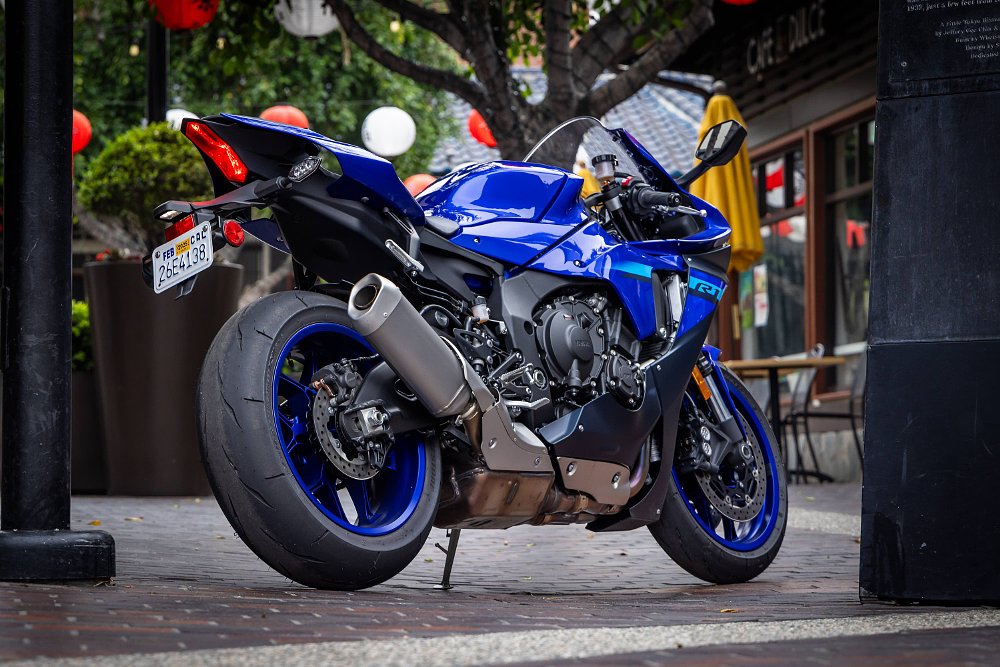
That’s not much, especially considering the strides that other brands have made with their biggest and best sport bikes over the past decade. The 2024 Yamaha R1 has most of the same foundation as the 2015 machine. Practically the same 998 cc inline-four cylinder engine, supported by fully adjustable KYB suspension, magnesium wheels, and a four-inch TFT dash controlling the suite of electronics.
There are surely a few factors that led to Yamaha offering minimal updates to the R1 in 2020. One of them is probably confidence that the motorcycle was and is relevant in the market, and that people would and will buy it because it’s still good. And then there’s the fact that sport bikes don’t sell like they used to. The question of how much more effort a company, like Yamaha, puts into upgrading and polishing a bike that it might soon remove from its lineup is a complicated one.
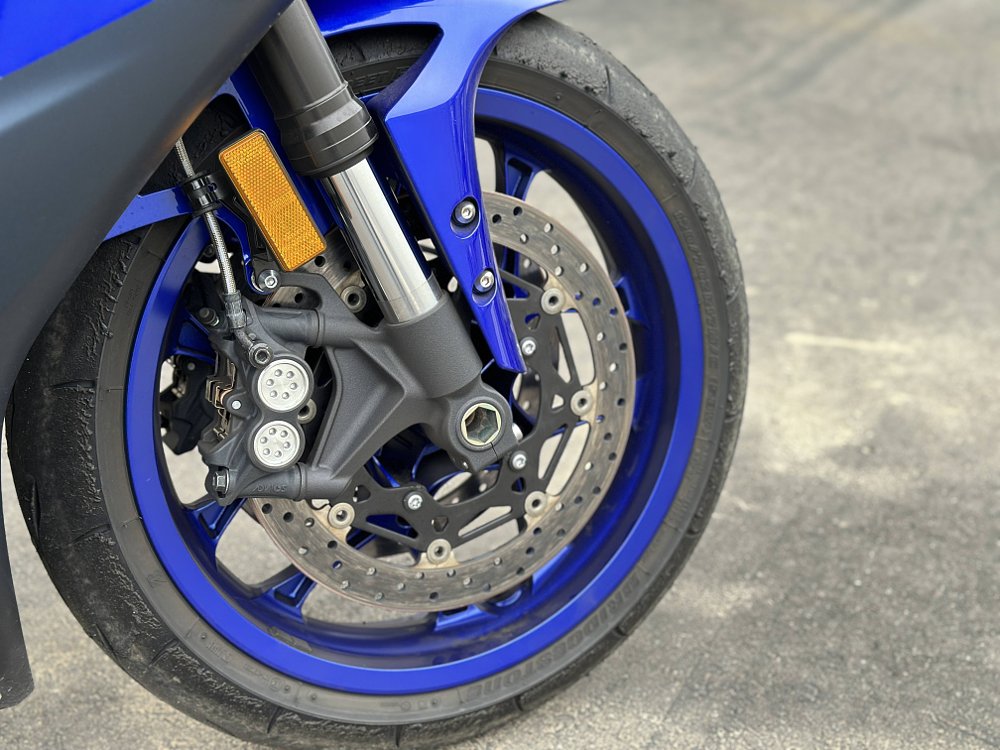
Questions of business and industry weren’t on my mind as I fired up the R1 and headed off on my first ride in about eight years. Mine was a question of self. It seemed likely that the motorcycle was largely the same as it was the last time I rode it, and so the question became more introspective. How much of the person who loved the R1 in 2015 was still inside?
Re-riding the R1, street and track
It’s still far from comfortable. I remember long rides on true sport bikes, even in my 20s, made my neck and wrists hurt, so I didn’t expect that to change. It’s a significant reach from the tall seat to the clip-ons, which are only a couple of inches higher than the saddle. “Aggressive,” we would call the riding position, if we’re being polite.
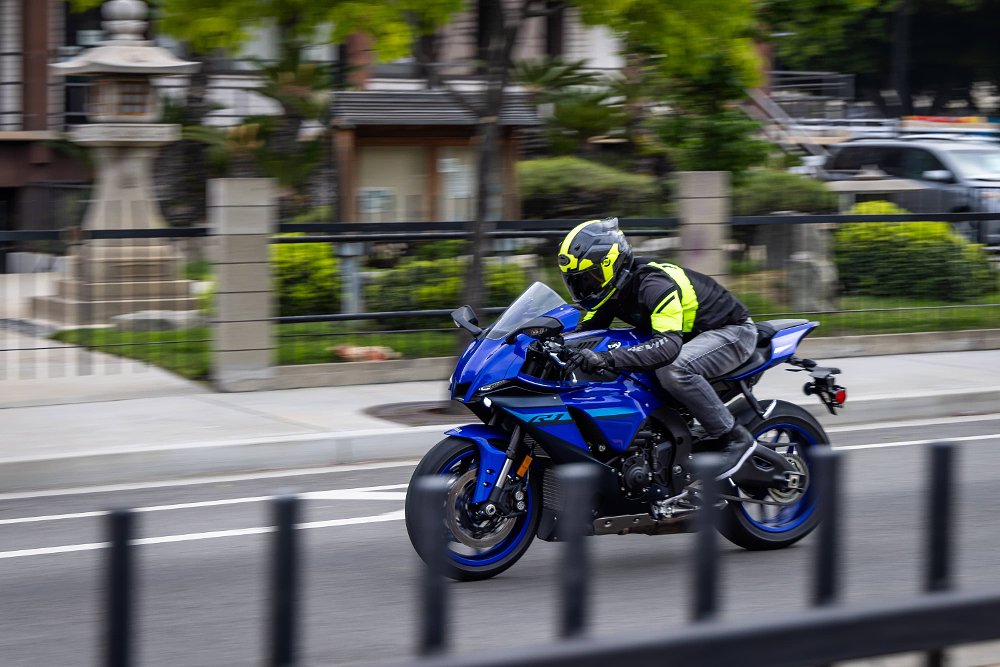
Still, I find the R1 uncomfortable in kind of a charming way. The riding position is unapologetic, certainly, and yet it sometimes feels like the rest of the bike is doing its best to mitigate the pain. Or most of it. The throttle response can be tuned to four different levels of aggression, and the bottom of the spectrum is fairly mild. Brake power has been a point of contention with this generation of R1, but in normal street riding the absence of a vicious initial bite is almost refreshing.
Aside from being tall and not providing much padding, the seat is unnaturally wide and surprisingly accommodating. Also, it’s probably comfier in part because so much of my weight is forced onto my wrists. Then there’s the junction of the fuel tank and seat, which is too excellent to be an accident. The rear of the tank slopes elegantly into the lines of the seat — it almost feels organic, like a canyon wall worn smooth by a river.
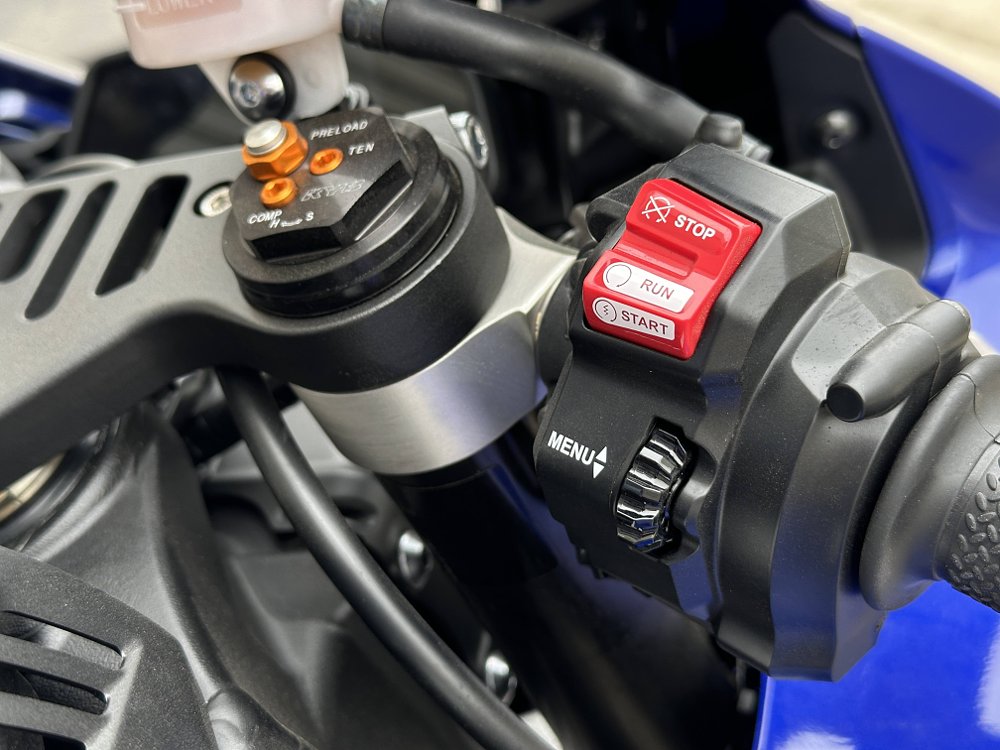
Oddly, the relatively gentle bite of the brakes and respectful initial hit of the engine doesn’t reflect the bike’s potential. First of all, there’s a solid rush of torque that’s available from just above idle to about 8,000 rpm, and it comes along with a nice, raspy grumble from the exhaust. The sound is pleasant and the power is crucial, considering how tall the final-drive gearing is on the R1.
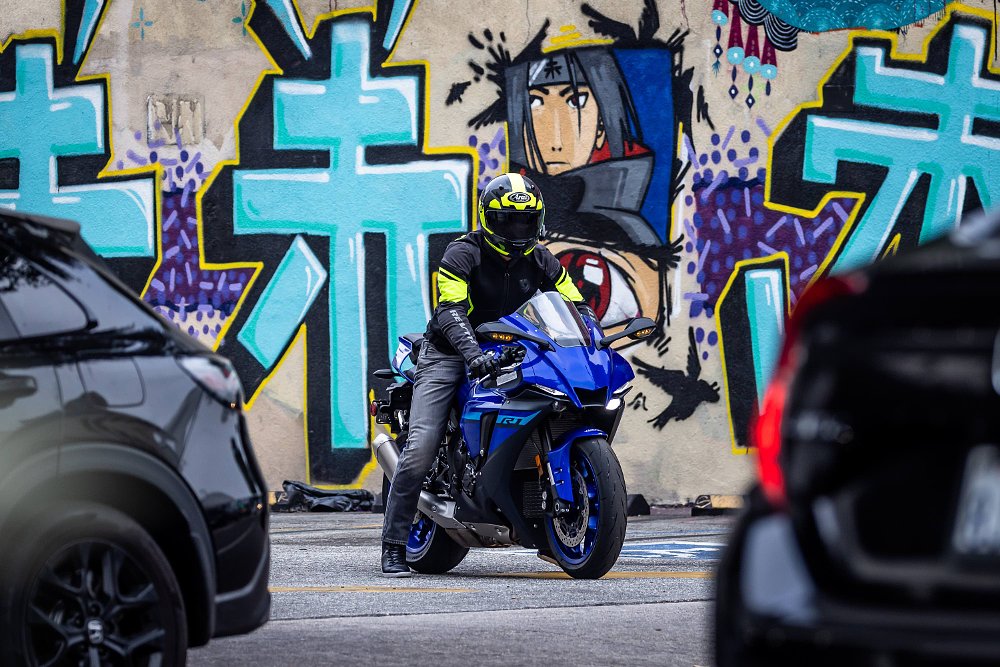
I’ve mentioned this before, in riding Aprilia’s RSV4 or Honda’s CBR1000RR-R, but because these bikes are made to go so fast, and have close-ratio transmissions, it means that first gear feels more like second or third. Last time I checked, the R1 would show 99 mph at maximum revs in first gear. If that seems absurd, just remember that it’s not supposed to prove anything; it’s just a fact that’s emblematic of the machine not being made for public roads.
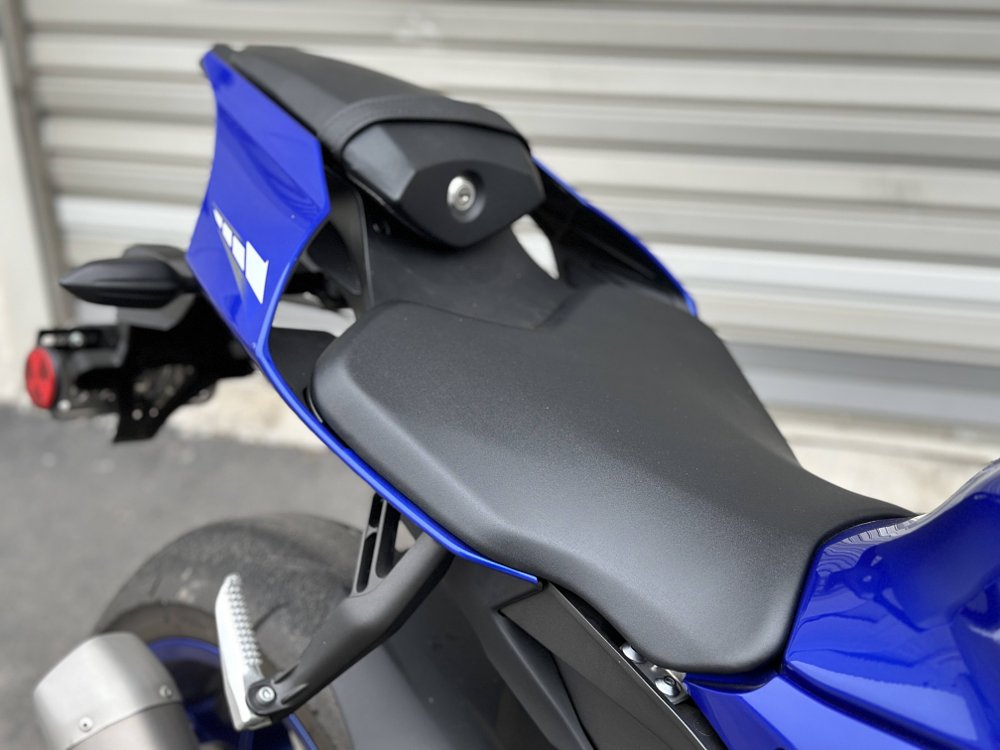
To reacquaint myself with what it feels like to ride an R1 on a private road, I signed up for a day of riding at Buttonwillow Raceway Park in California’s sun-baked Central Valley. Even just accelerating out of pit lane and onto the track for my first warm-up laps, the R1 started to blossom. It reminded me of the scene from "Independence Day" where the defunct alien spacecraft comes online when the mothership is nearby. At speed, the bike is where it belongs.
That sweet sound that the R1 spits out the exhaust in the bottom half of the rev range changes character as the revs near 10,000 rpm. Above 8,000 rpm, the digital bar tachometer turns from black to green and that’s more than just a color-screen gimmick. Suddenly the wheelie control engages and the bars go light in your hands. The engine turns into a roaring tenor, howling into five-digit revs and begging for the next cog in the transmission.
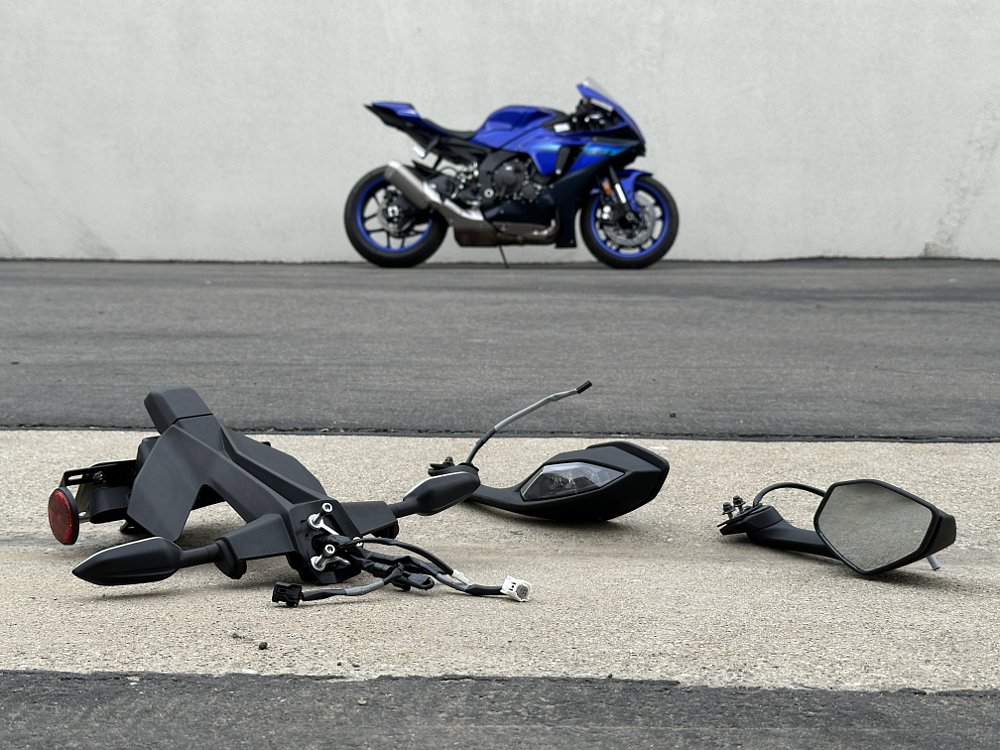
A few pulls through second and third gear reminded me how potent the R1 is, as a performance machine. It’s easy for a motorcyclist these days, especially a jaded journo such as myself, to be blasé about the R1’s hundred-n-something claimed ponies. Doesn’t the claimed power number have to start with a two instead of a one if a bike wants to be fast? No, that’s dumb. The R1 is still plenty quick.
As the tires warmed up, the bike encouraged me to lean over more, and to transition from side to side with more urgency every lap. Those brakes that feel so gentle on the street are the only piece of componentry that doesn’t quite fit the R1’s demeanor. There’s always enough power to stop, but the lever gets mushy and fades back toward the handlebar as the pace heats up.
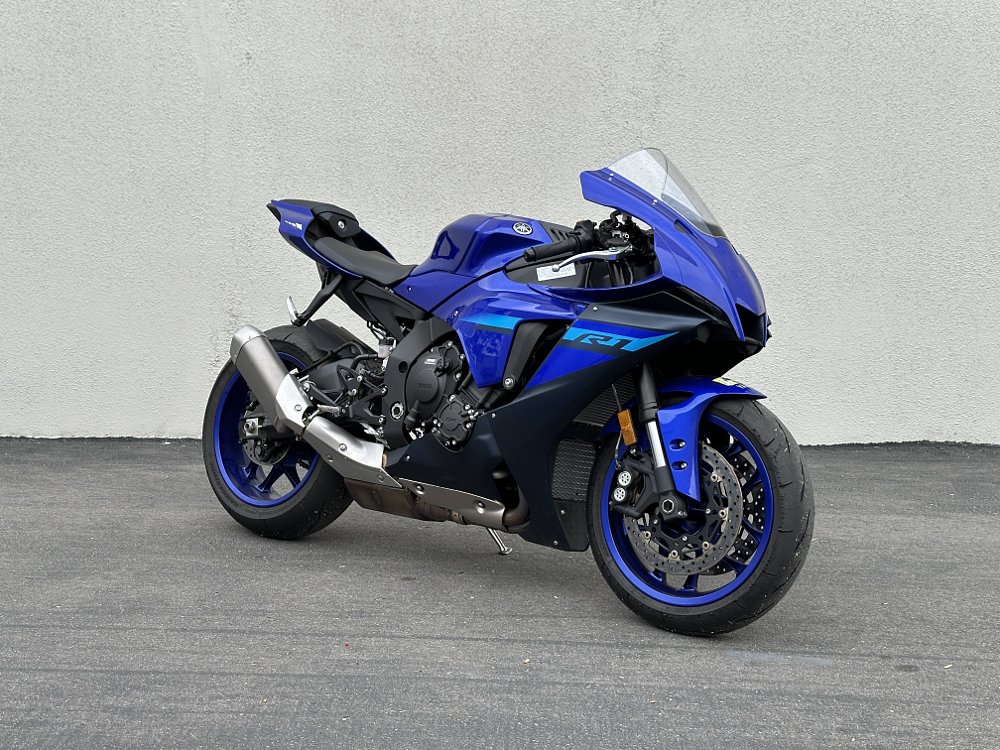
No other part of the motorcycle feels mushy or fades. In fact, every other aspect of the R1 is amazingly on point. It’s easy to move around on, because of that lovely seat-to-tank junction and because it fits riders more than six feet tall (as I am) pretty well. The wheelbase is only a little north of 55 inches, which contributes to the R1’s nimble nature, and yet in fast sweepers or transitions between 100-mph curves the R1 feels ultra stable.
When your confidence goes too far, the suite of rider aids casually intervenes. Traction control and slide control let the rear tire slide and smear in an incredibly natural way, leaving me with the feeling that I didn’t make a mistake but rather I should be trying to do that in every corner. Wheelie control can get a little bit baffled with sharp elevation changes but for the most part feels as impressive as any other system I’ve used in the past 10 years.
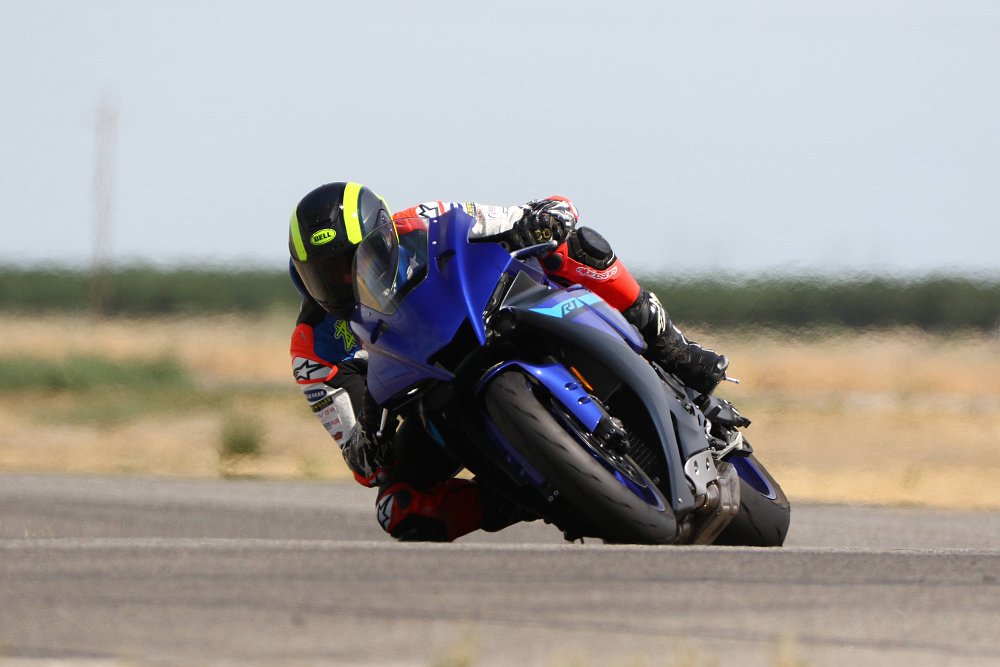
Foundationally, it’s stellar. To fall into a corner at an otherwise-reckless speed on a racetrack and simply know that the bike will catch you — that it will be predictable and calm, that it will let you teeter on the edge of your own skill, lap after lap — is a special feeling. Not unique to the R1, but rare in the world of two wheels.
All the while, there’s that MotoGP-inspired soundtrack bellowing in your ears. It’s not just easy to ride and easy to push your own limits, it’s easy to love. The R1 experience on a racetrack mirrors, and amplifies, the sensation of riding it on the street. It isn’t a toy, it’s a tool to accomplish a task. And yet, despite being efficient and orderly it isn’t cold — the R1 delivers all of its capability with warmth, almost as though it wants you to be the best rider you’ve ever been.
Reunions, happy and sad
There are some old friends that do this for us. They make us feel good. Which is why it’s particularly sad that it seems like the R1’s days on dealer floors might be numbered. Road-going versions of the R1 are scheduled to be discontinued in the European market starting in 2025, and there’s been some trouble inside Japan as well. None of this is a death knell for owning, experiencing, or even buying an R1, but it’s hard not to see it as writing on the wall.
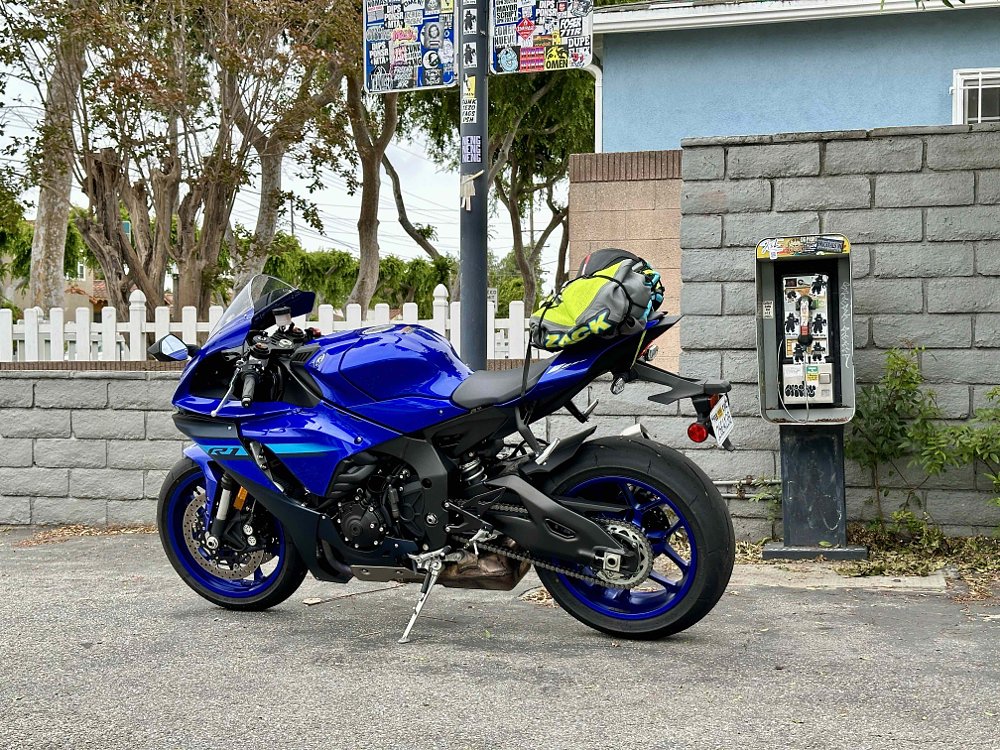
It’s also difficult not to see the manufacturers’ predicament. Regulations continue to tighten as buyers seem less motivated, and the machines are so good it’s hard to know what the next step would be anyway. Every showroom superbike in the world seems to be hovering between perfection and obsolescence in a way that nobody is sure how to address.
Perhaps that creeped into my mind, too — a worry that the R1 couldn’t be as good as I remembered, simply because we have clearly grown apart. I’m not tempted anymore by an $18,000 sport bike that can go 100 mph in first gear. I don’t want that poster on my wall. For the most part I’m too practical, too frugal, and too boring to even dream that dream.
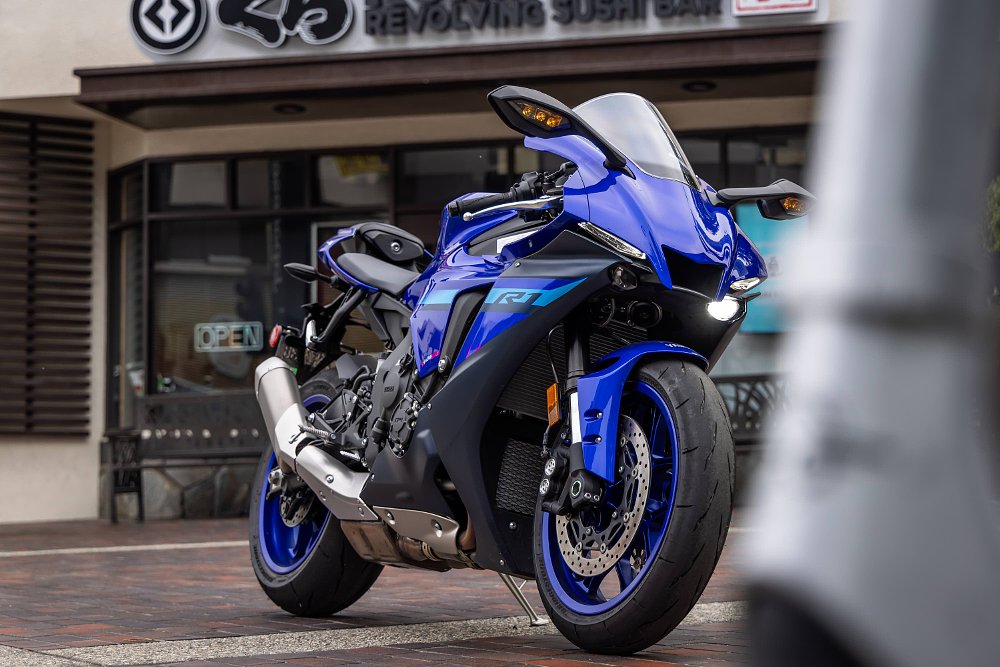
I suspect that some motorcycles I have ridden in the past might fail in a different way. They might feel antiquated or slow, or leave any number of other sour tastes on my tongue. Like some old buddy who's great to see for a minute, but the conversation fizzles out. The best friends, however brief in our lives, are the ones that seem to pick up the conversation right where we left off.
Yamaha’s R1 is one of those machines for me. It doesn’t just rekindle old jokes. It’s full of challenging and sympathetic energy, a reflection of what I like about myself and a reminder that a certain portion of my soul is still intact. Maybe old friends are better than heroes, because they make you feel like both.
| 2024 Yamaha YZF-R1 | |
|---|---|
| Price (MSRP) | $18,399 |
| Engine | 998 cc, liquid-cooled, 16-valve, inline-four |
|
Transmission, final drive |
Six-speed, chain |
| Claimed horsepower | na |
| Claimed torque | na |
| Frame | Aluminum twin spar |
| Front suspension | KYB 43 mm fork, adjustable for spring preload, compression, and rebound damping; 4.7 inches of travel |
| Rear suspension | KYB shock, adjustable for spring preload, compression, and rebound damping; 4.7 inches of travel |
| Front brake | ADVICS four-piston calipers, 320 mm discs with ABS |
| Rear brake | Nissin single-piston caliper, 220 mm disc with ABS |
| Rake, trail | 24.0 degrees, 4.0 inches |
| Wheelbase | 55.3 inches |
| Seat height | 33.7 inches |
| Fuel capacity | 4.5 gallons |
| Tires | Bridgestone Battlax RS11, 120/70-ZR17 front, 190/55-ZR17 rear |
| Measured weight | 452 pounds |
| Available | 10 years ago |
| Warranty | 12 months |
| More info | yamahamotorsports.com |





